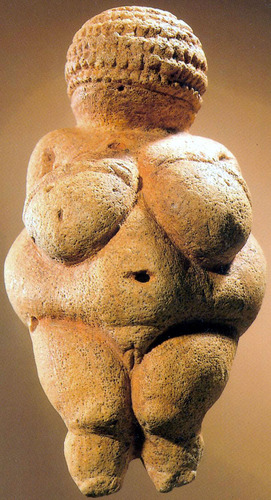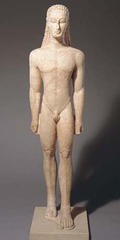Arts In Western Civilization Course Note Stars
1/26
Earn XP
Description and Tags
(Study Guide: Unit Test 1)
Name | Mastery | Learn | Test | Matching | Spaced |
|---|
No study sessions yet.
27 Terms
What does it mean to be human? (CN3)
It has been regarded as a masterpiece across generations [*the test of time]
Prehistoric Art three main categories:
1. Cave paintings
2. Megalithic (large stone) Structures
3. Various Carvings and Sculptures
More specific questions: 1. Does God exist?
e.g., the Ancient Egyptians: Note: most surviving examples of Egyptian art comes from tombs [*religious/burial contexts]
More specific questions: 2. Does life have meaning?
What is the meaning of life? Why am I here? Does MY LIFE have inherent meaning & value?
More specific questions: 3. What is love?
a) People who feel loved [*often demonstrate great optimism in times of despair]
b) People who feel unloved [*often fall into great despair in times of plenty]
More Specific questions: 4. What is beauty?
Albrecht Dürer (1471 - 1528)
a) Question: What is beauty?
b) Answer: Only God knows
Big Star
THE STUDY OF ART IS NEVER JUST ABOUT ART
American Masterpiece: The Course of Empire (1833-36, NY Historical Society) Results:
Lots of theories and educated guesses (*Scholarly Suggestions)
Prehistoric Art Definition
"Art and culture created before recorded history"
An Example of Naturalism (Naturalistic):
"A style of art that aims to depict the natural world as it appears"
The Venus (Woman) of
Wilendorf
The Venus (Woman) of Wilendorf
Today, the figurine is widely regarded as the first masterpiece of world sculpture

The Ancient Greeks Art and Cultural Values (Observation):
Art reflects the values and beliefs of the people who made it [*if you want to know what a society believes, then look at the art it produces & celebrates]
Greek Figurative Sculpture Significance:
For the first time in history artists began to produce images of the human body that were more true to nature [*movement; beauty] [a combination of naturalism and idealism]
Greek Figurative Sculpture The Most Popular Subject in Western Art:
The Human Body
Greek sculpture originated around the
middle of the seventh century B.C.
Figurative Sculpture Early influence:
Egyptian art [and other eastern cultures]
The Kouros [meaning 'young man']
A standing male [note: from the beginning, c. 660 B.C., men were depicted nude; frontal stance, left foot advanced, clenched firsts, the "Archaic smile"

Why Nudity Observation:
statues of nude males began to appear around the same time that nudity became standard in Greek athletics (close relationship: nudity & the gymnasium)
The Kore
standing female [clothed; Egyptian antecedent: no, maybe...?; frontal stance, she is usually portrayed holding some kind of offering in her hand?]
![<p>standing female [clothed; Egyptian antecedent: no, maybe...?; frontal stance, she is usually portrayed holding some kind of offering in her hand?]</p>](https://knowt-user-attachments.s3.amazonaws.com/cf91a737-69e4-4801-a3f7-1bffb465d8b8.png)
Kritios Boy
[c. 480 B.C., 3 feet 10 inches tall]: an early example of contrapposto: a human figure standing with most of its weight distributed on one foot [a relaxed, natural stance]
![<p>[c. 480 B.C., 3 feet 10 inches tall]: an early example of contrapposto: a human figure standing with most of its weight distributed on one foot [a relaxed, natural stance]</p>](https://knowt-user-attachments.s3.amazonaws.com/ccb03460-2e87-4698-a0ee-3de1a69d3bfb.jpg)
Polykeitos of Agros:
he was one of the most celebrated and influential sculptors in antiquity [c. 450-420 B.C.]
Polykeitos of Agros: published a theoretical text titled Canon
in which he worked out, in mathematical terms, the ideal ratios and proportions of the beautiful body
Greek Artists and the Love of Competition
Competitiveness was the character trait most often associated with artists
Apelles and Protogenes
1. What are the names of the artists competing.
2. What was the competition.
3. Who was the winner of the two.
1. Apelles and Protogenes.
2. Who could draw a straight line.
3. Apelles was the winner.
Zeuxis and Parrhasius
1. What are the names of the artists competing.
2. What was the competition.
3. Who was the winner of the two.
1. Zeuxis and Parrhasius.
2. Zeuxis could fool birds, but Parrhasius folled Zeuxis, an artist.
3. Parrhasius was the winner.
The Arts Beleif:
the arts have the ability to influence human behavior [*they engage human emotion] [*art is never neutral]